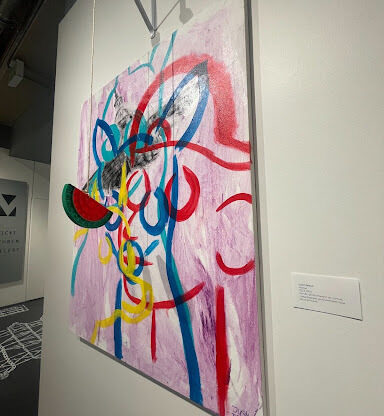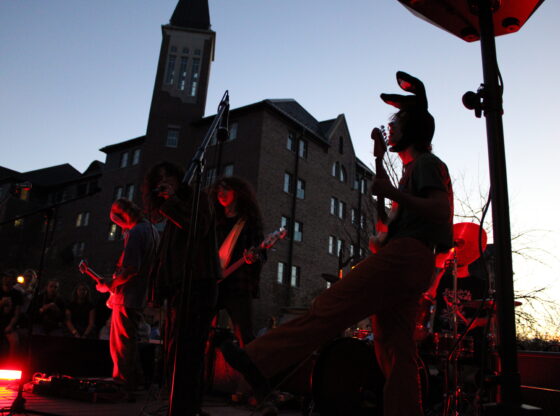*UPDATE* The DAM will be closing until March 31 and will reassess the situation with coronavirus. Updates to the reopening or further closing of the museum available at the DAM website.
While Americans race to stay inside in the midst of a worldwide pandemic, the Denver Art Museum’s (DAM) most recent special exhibition encourages people to do the opposite. Nicknamed “Homington” by the DAM curators, 60 works of two acclaimed American outdoors painters, Winslow Homer and Frederic Remington, make up the “Natural Forces” exhibition that will hang in Denver from March 15 to June 7.
Painting and living at the time of the mid to late 19th century, Remington and Homer were shockingly similar artists for having never met. They were both primarily self-taught, they both worked as reporters for news publications (notably “Harper’s Weekly”) and they both spent recreational time in New York’s Adirondack mountains.
To make everything more exciting, combining the two fundamentally similar yet strikingly different artists into one comprehensive exhibition has never been done before in history.
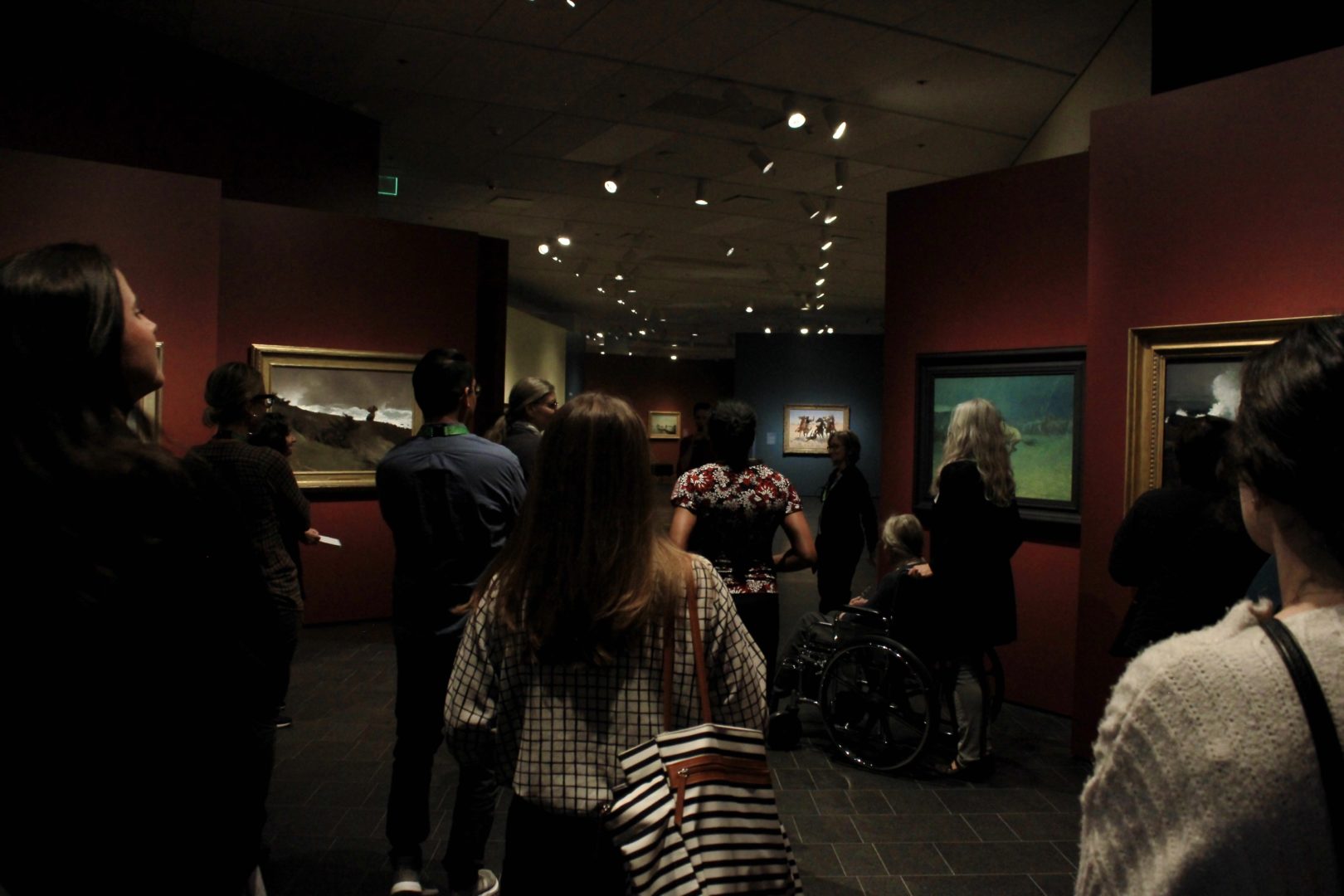
“Critics of the time often used the same terms to describe Remington and Homer,” stated Thomas Brent Smith, DAM’s curator of American Western Art. “They called them self-taught, [and] they also said that they were homegrown, but above all, they were quintessentially American. And as much as critics may have used the same terms and authors have put them together in publications, they’ve never been out together in [an] exhibition like this until now.”
In Remington’s classic masterpieces of the American Wild West and Homer’s tranquil and momentous seashore scenes, the two artists depicted two ideals of American life and nature at the time of the Civil War, industrialization and artistic/literary expression.
In an uncanny, coherent tie-over from the museum’s previous nature-focused Monet exhibition, “Natural Forces” builds on the outdoors-oriented themes seen in the DAM in the past year.
“I don’t think it’s terribly surprising that Monet and this show both have nature as a protagonist, because all of these works were produced at the same time – the second half of the 19th century into the 20th,” stated Jennifer Henneman, associate curator of Western American Art at DAM. “Nature at this moment really enjoys a pedestal partly because people recognize that if we continue developing spaces, we won’t have any nature left. So there’s a real turn to the value of nature both for recreation, but also as unique expressions of what is American in the case of this exhibition.”
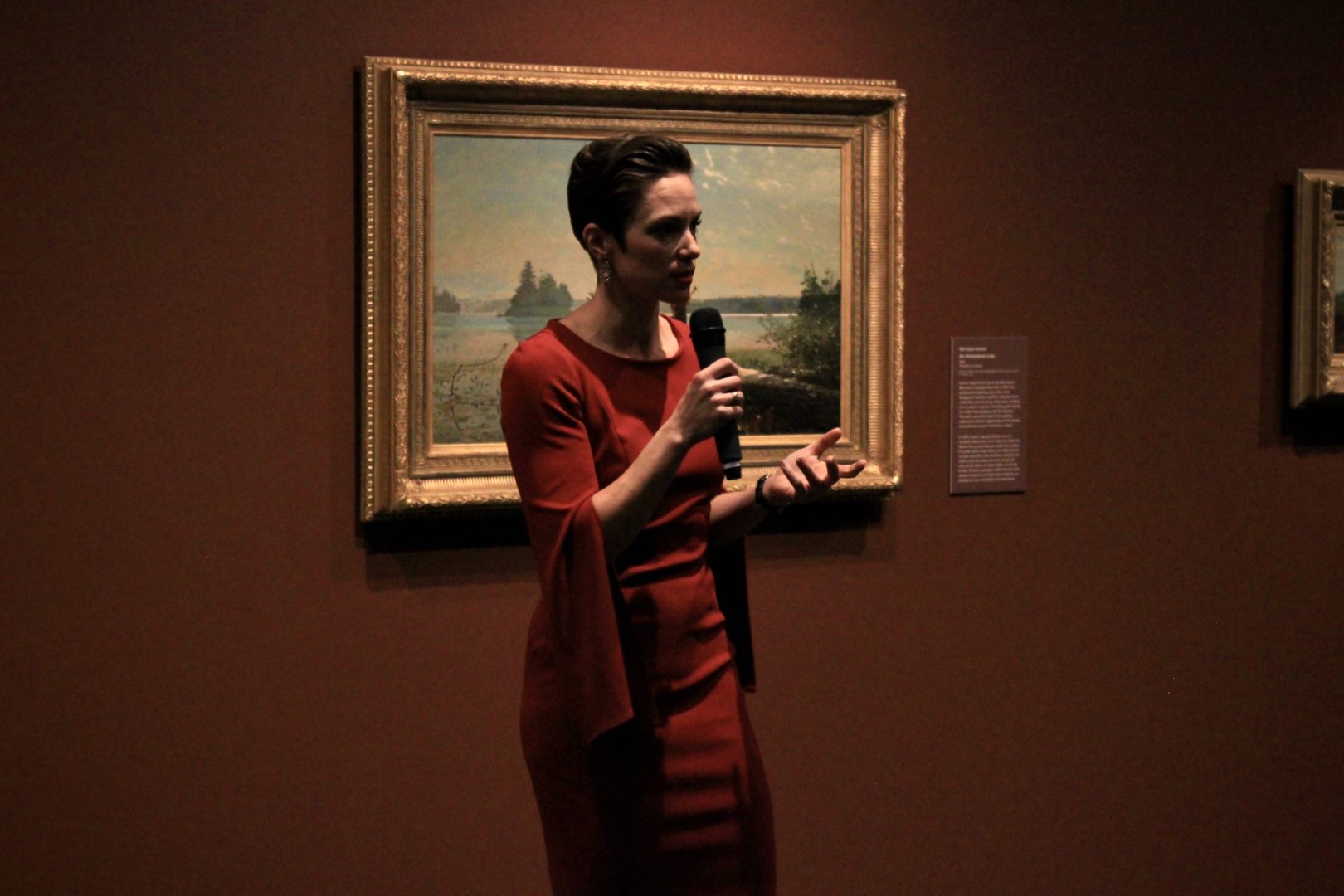
In the time of the Civil War and rapid industrialization in America, these artists realized the destruction of the natural world and their countrymen occurring all around them. The exhibition is organized chronologically through the artists’ lives and works, where audiences can see these themes coming to light from the beginning to the end of their lives.
The first portion of the exhibit highlights Remington’s and Homer’s early artistic careers as war reporters and illustrators for American periodicals. At the time, the U.S. relied on embedded journalists and illustrators to write and visually represent wars for Americans who couldn’t see them. Homer covered the American Civil War while Remington, who was born later in the 19th century, covered the Spanish-American War in Cuba.
“This gallery provides a number of examples of paintings that are the news for illustrations to help viewers understand how this kind of material was disseminated broadly to national and international audiences,” stated Henneman.
Trying to sell newspapers and grab audience attention furthered Remington’s and Homer’s ability to bring action and drama to the front of a piece and make a visually cinematic composition. This real-time, action illustration style stayed with them both and characterized their later, more expressive careers and artistic technique. Early war illustration influence is easily noticeable in iconic later pieces like “Dash for the Timber” (Remington, 1889) and “Undertow” (Homer, 1886), both currently on display in “Natural Forces.”
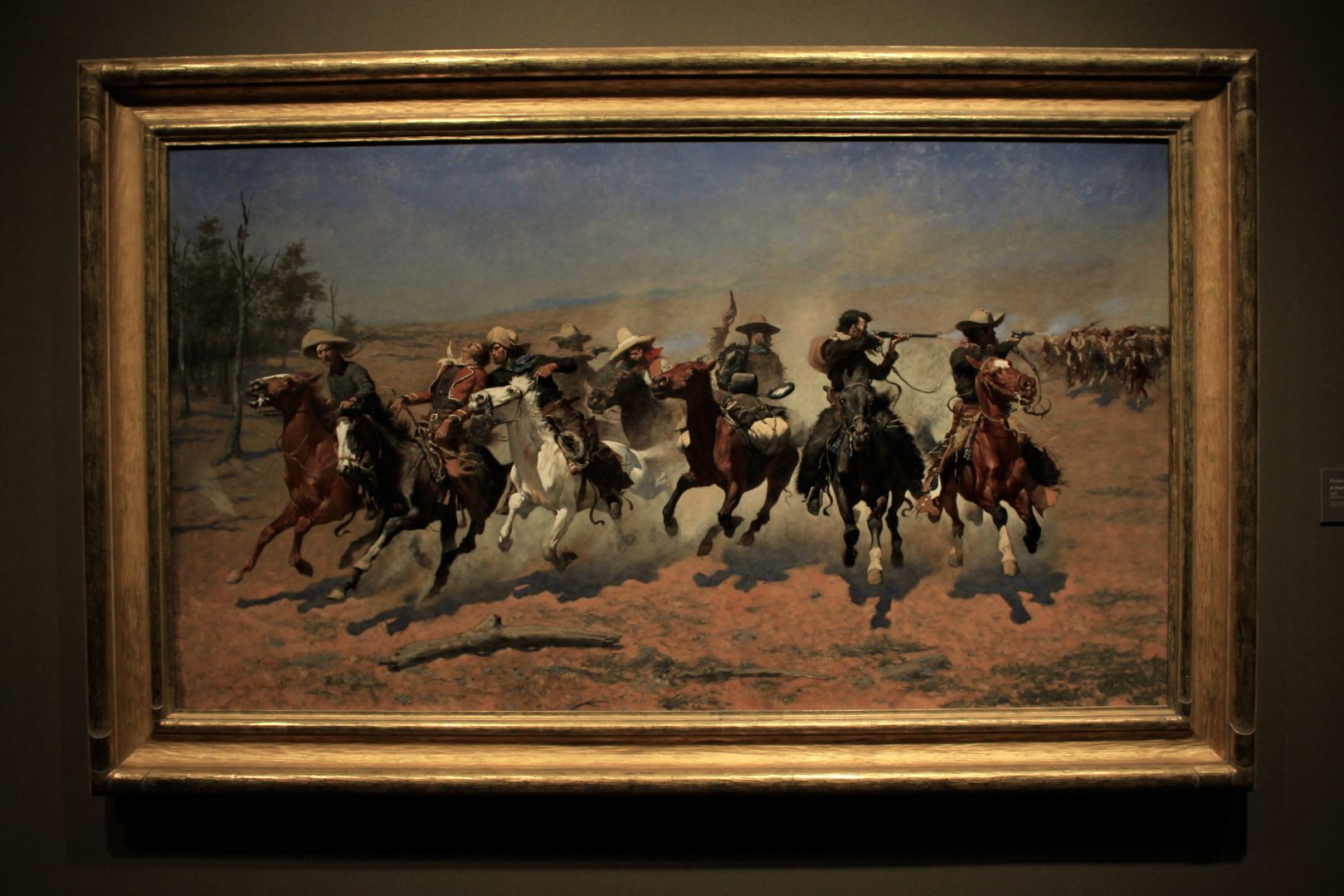
However, both artists also escaped urban life and war in the natural wonders of upstate New York. In these paintings in the second part of the exhibit, nature serves as the dramatic protagonist in place of soldiers with guns. For the people stuck in the city working factory jobs, Remington and Homer painted landscapes for people to live vicariously through the scenes in paintings like “An Adirondack Lake” (Homer, 1870).
“Some scholars have argued that these works, the ability to meditate upon them and enjoy them in your own home provided that same kind of nature therapy that people felt they really needed at this point in time,” said Henneman of these works.
In the last two sections of the exhibit, the artists use their exceptional oil painting expertise to come into their infamous characters: Remington as a painter of the Wild West and Homer of the Atlantic sea.
Legendary and life-sized paintings like “The Buffalo Runners – Big Horn Basin” (Remington, 1909), “West Point – Prout’s Neck” (Homer, 1900) and “The Fox Hunt” (Homer, 1893) welcome viewers out of indoors and into an exhilarating outdoor adventure. All of these paintings also rarely travel, – if they have ever travelled at all – making it a special treat for Denver audiences.
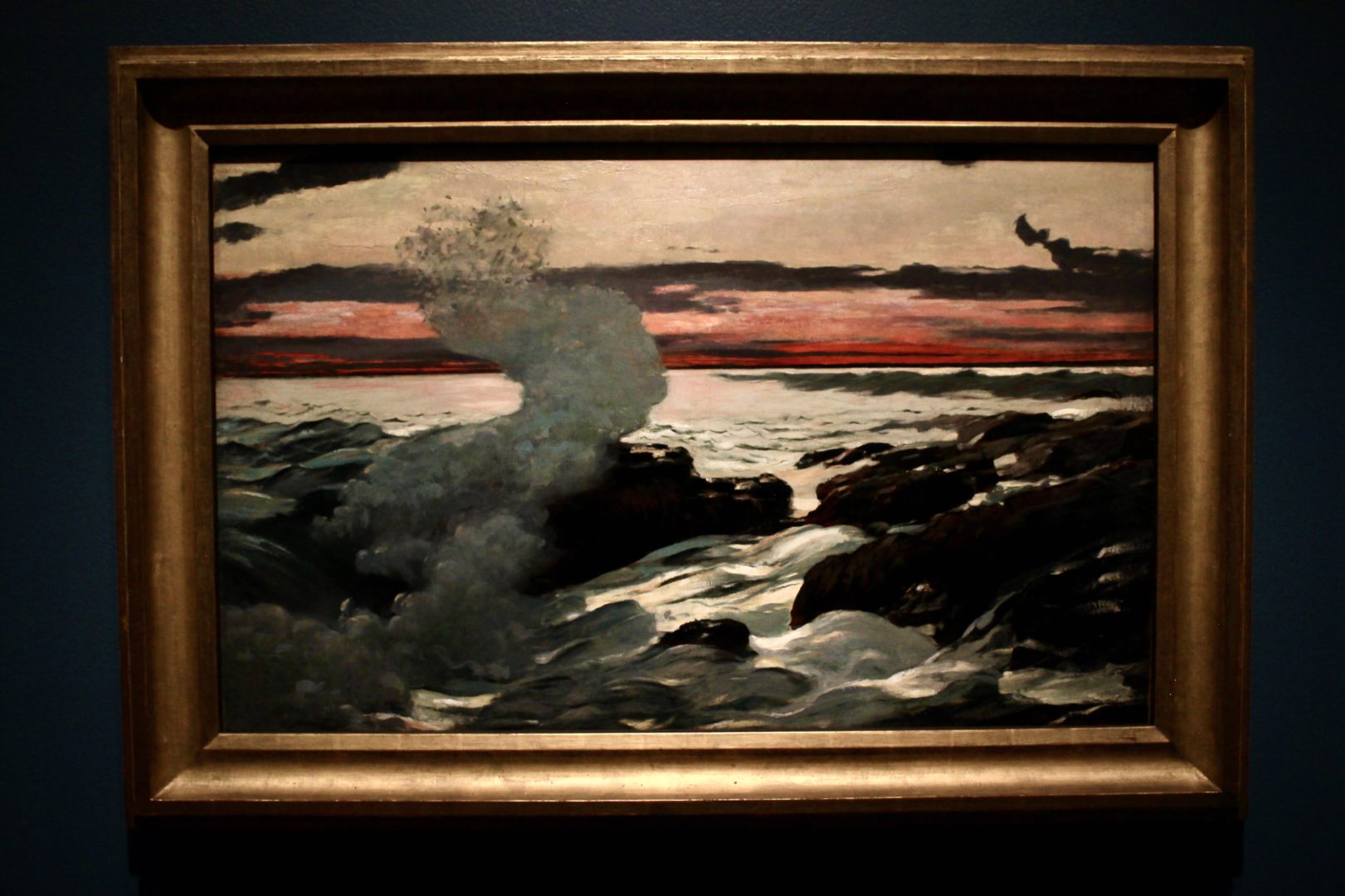
“Homer and Remington are presenting subjects that seem to reflect a unique experience of the American nation,” said Henneman. “The West, for example: this place of sublime landscapes of challenging beauty, a place where you go to be tested, where you go to be free, where you go to be liberated. Homer, on the other hand, is looking to the sea, the ocean, to the power and the drama.”
A series of Remington’s famous nocturne paintings and bronze sculptures as well as Homer’s seashores and watercolors also contribute to the exhibition. With quotes from famous American poets and the artist’s own personal letters, the exhibit is an ode to 19th century America and all of its beauty, loss and adventure.
The exhibit will be on display until June 7, pending a possible closure of the museum due to coronavirus concerns and precautions.




